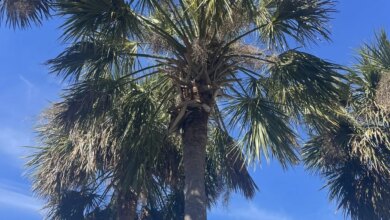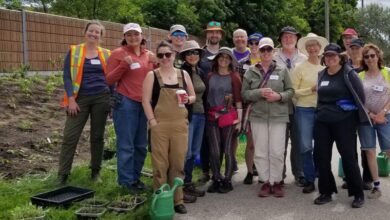A Cattle Egret in a Cow Pasture – Reflections of the Natural World
One Moment in Nature is a reflection back in time to a moment of discovery as I explored the natural settings around me. Through the sharing of this moment, is my hope that readers will become motivated to learn more about our environment and its inhabitants, and become passionate advocates for conservation. One Moment in Nature is a Reflections of the Natural World Blog Post Series by Jim Gain
THE CATTLE EGRET MOMENT
Jim Ross and I had plans to visit Del Puerto Canyon and along the way we stopped by the Vivian Rd wetlands, hoping for a bittern. As we waited (unsuccesfully) for a bittern to appear, we noticed numberous White-faced Ibis fly over and land in the field to the Southwest of us. As we watched the ibis land, we noticed several small, white egrets in the same field. We circled back around on Jennings Rd towards Patterson and Jim Ross pulled off the road so I could run across the road (dodging traffic) and get closer for some action shots.
ABOUT THE CATTLE EGRET IN CENTRAL CALIFORNIA
In California’s Central Valley, the Western Cattle Egret has become a ubiquitous presence across agricultural landscapes, wetlands, and grasslands. Originally native to Africa and southern Europe, this species underwent a rapid and remarkable range expansion during the 20th century, arriving in North America in the 1950s and quickly colonizing much of the continent. In the Central Valley, it is now a year-round resident, thriving in the region’s mosaic of irrigated fields, pastures, and rice paddies. Its preference for open, dry habitats sets it apart from other herons and egrets, which tend to favor wetter environments.
The species occurs widely throughout the Valley, often in large flocks that follow livestock or farm machinery to forage on insects and small vertebrates stirred up by movement. It is especially common in dairy and cattle operations, where its symbiotic relationship with grazing animals is on full display—riding on backs, picking off ticks, and snapping up flushed prey. Breeding colonies are typically located near water, often in mixed-species rookeries with other wading birds. Nesting occurs in trees or shrubs, and the species shows strong site fidelity once established.
Globally, the Western Cattle Egret is listed as Least Concern, and its population in California is considered stable or increasing. Its success is largely attributed to its adaptability to human-modified landscapes and its generalist diet. However, conservationists remain attentive to potential threats, including pesticide exposure, habitat degradation, and climate-driven changes in agricultural water use. Because it exploits drier habitats than most herons, shifts in land management—especially reductions in pasture or flood-irrigated acreage—could influence its local abundance
Natural history reveals a bird that has rewritten the rules of colonization. Unlike most herons, the Western Cattle Egret is a terrestrial forager, often seen striding through fields with a jerky gait and head-bobbing motion. During breeding season, adults sport buff-colored plumes on the head, chest, and back, adding a splash of color to their otherwise white plumage. Their rapid expansion across continents is one of the most dramatic avian success stories of the last century—a testament to ecological flexibility and the unexpected opportunities created by human activity.
A PHOTO GALLERY OF CATTLE EGRETS
Most recent Blog Posts from the One Moment in Nature series.



